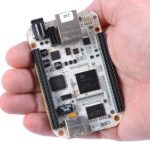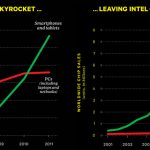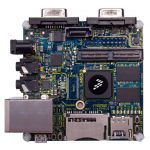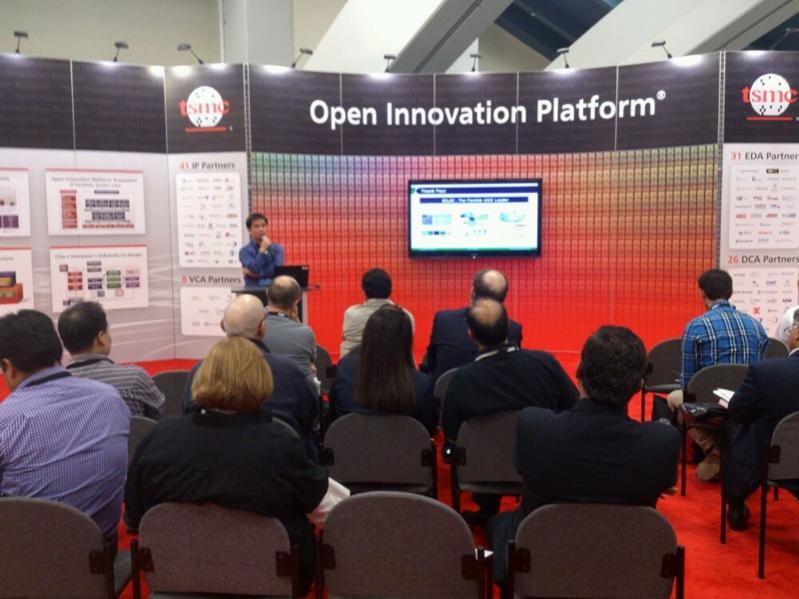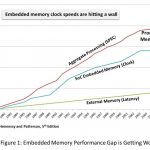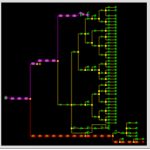In a discussion with one of my PR network recently, I found myself thinking out loud that if the merchant SoC market is getting squeezed hard, that validates something I’ve been thinking – the merchant CPU board market is dying from the middle out.… Read More
Tag: soc
Current Embedded Memory Solutions Are Inadequate for 100G Ethernet
With an estimated 7 billion connected devices, the demand for rich content, including video, games, and mobile apps is skyrocketing. Service providers around the globe are scrambling to transform their networks to satisfy the overwhelming demand for content bandwidth. Over the next few years, they will be looking to network… Read More
SpringSoft Laker vs Tanner EDA L-Edit
Daniel Payne recently blogged some of the integration challenges facing Synopsys with their impending acquisition of SpringSoft. On my way back from San Diego last week I stopped by Tanner EDA to discuss an alternative tool flow for users who find themselves concerned about the Laker Custom Layout road map.
Design of the analog… Read More
A Brief History of SoCs
Interesting to note; our cell phones today have more computing power than NASA had for the first landing on the moon. The insides of these mobile devices that we can’t live without are not like personal computers or even laptops with a traditional CPU (central processing unit) and a dozen other support chips. The brain, heart, and… Read More
While you’re reading the SoC manual
There was a day, not too long ago, when a software developer could be intimate with a processor through understanding its register set. Before coding, developers would reach for a manual, digging through pages and pages of 1s and 0s with defined functions to find how to gain control over the processor and its capability. One bit set… Read More
The Total ARM Platform!
In the embedded world that drives much of today’s ASIC innovation, there is no bigger name than ARM. Not to enter the ARM vs. Intel fray, but it’s no exaggeration to say that ARM’s impact on SoCs is as great as Intel’s on the PC. Few cutting edge SoCs are coming to market that do not include some sort of embedded… Read More
TSMC: Production Proven Design Services Driving SoC Innovation!
One of the truisms of today’s disaggregated semiconductor design and manufacturing model is counter-intuitive to the do-it-yourself focus that is at the heart of every engineer. And yet, time and time again, success rewards those who understand that with today’s ever increasing complexity, it is difficult, if… Read More
Mind the Gap — Overcoming the processor-memory performance gap to unlock SoC performance
Remember the processor-memory gap— a situation where the processor is forced to stall while waiting for a memory operation to complete? This was largely a result of the high latency required for off chip memory accesses. Haven’t we solved that problem now with SoCs? SoCs are typically architected with their processors … Read More
Cadence Update 2012!
What’s new at Cadence? Quite a bit actually. I have always been a Cadence fan, I mean really, they gave birth to modern EDA. Unfortunately, Cadence really lost me during the Avant! legal action, the Mike Fister years, and EDA360. Recently, however, Cadence has made some big changes that will definitely get them back on my good side.… Read More
The Biggest EDA Company You’ve Never Heard Of
There’s this EDA company. They have over 100 tapeouts. They have a $28M in funding. They have 250 people. And you’ve never heard of them. Or at least I hadn’t.
They are ICScape. They started in 2005 with an investment from Acorn Campus Ventures and delivered their first product, ClockExplorer, in 2007 and their… Read More


